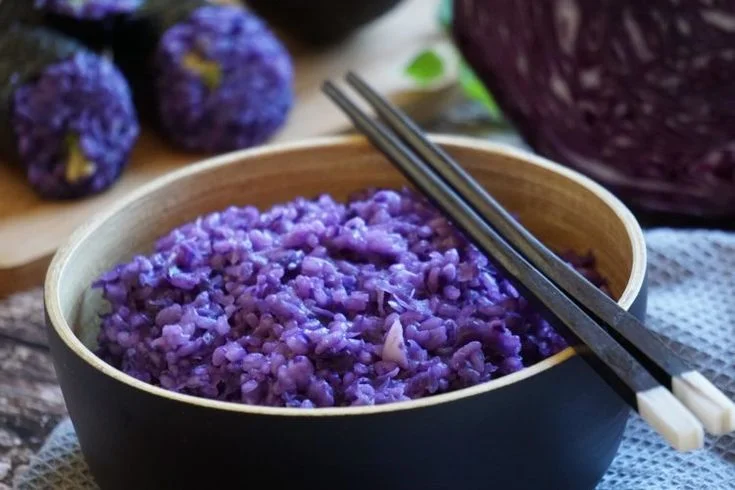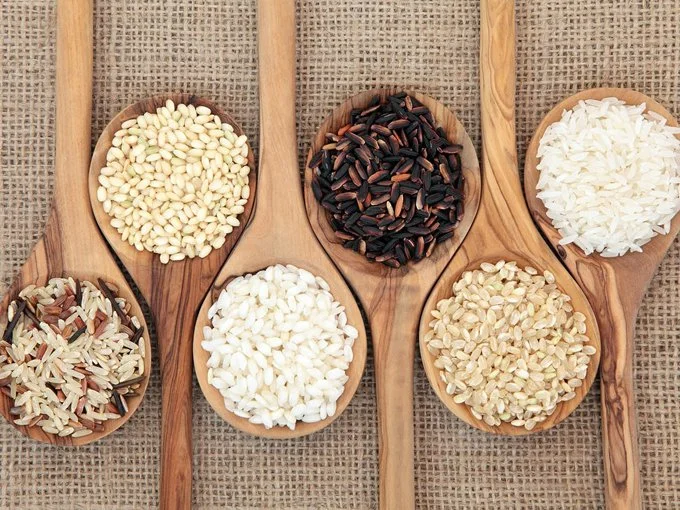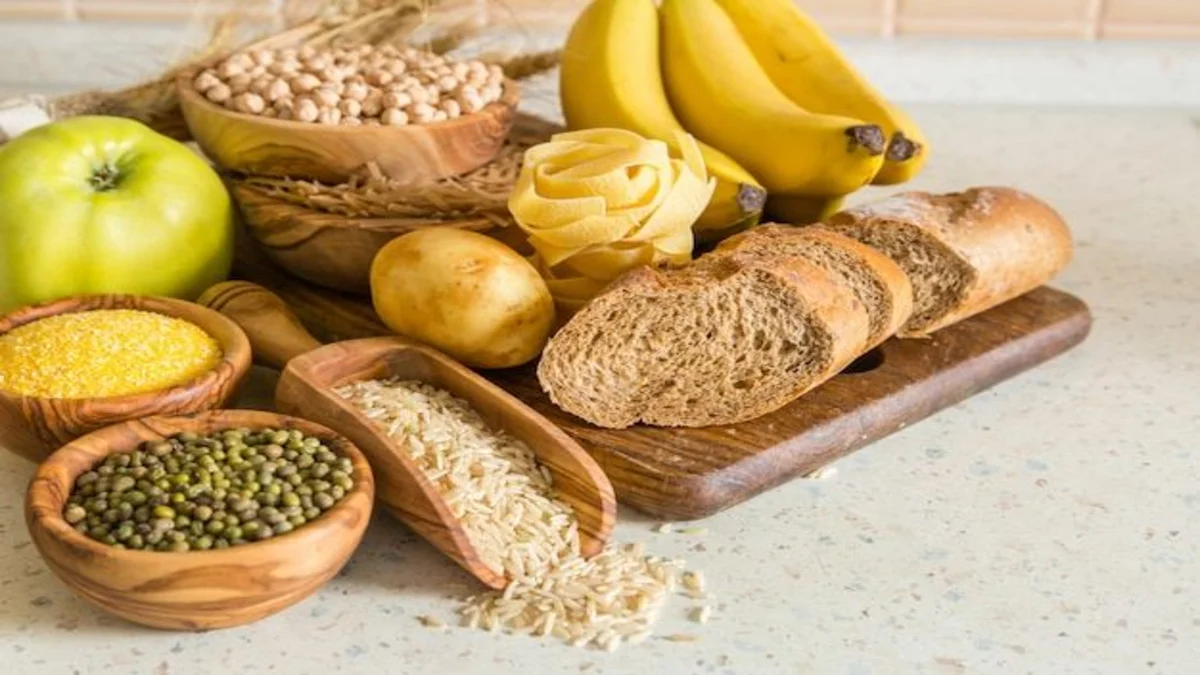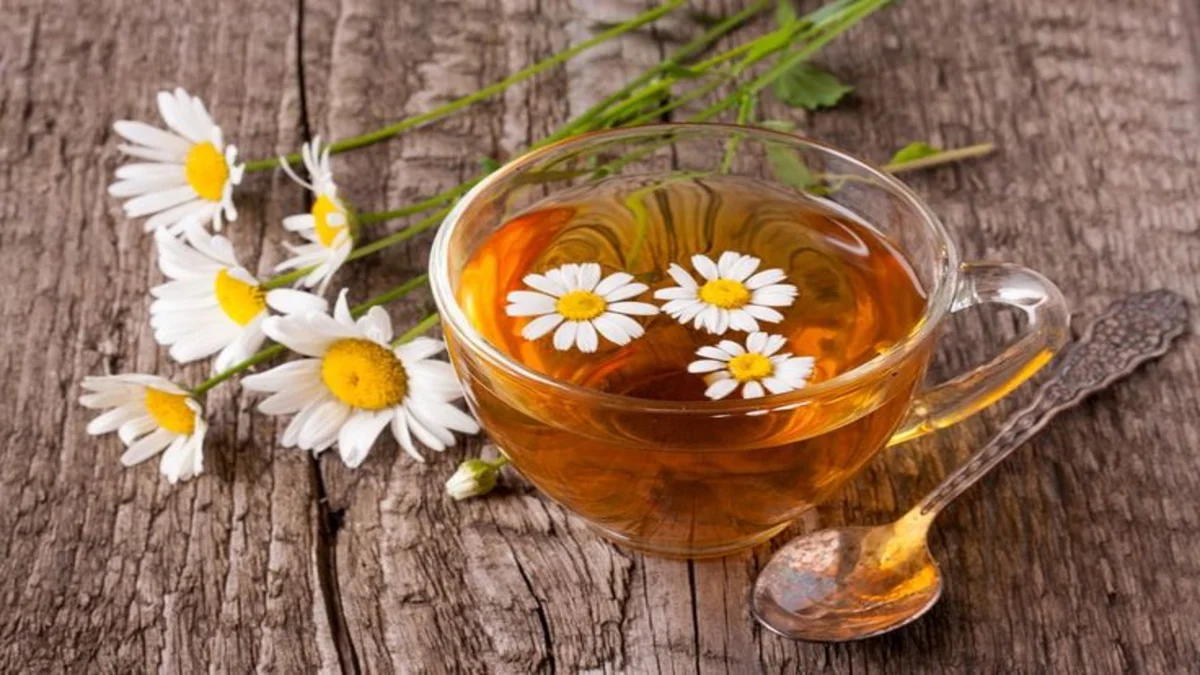Have you ever heard of purple rice and its health benefits? This colorful variety of rice has been gaining popularity for its nutritional value and vibrant hue.
Purple rice, also known as black rice or forbidden rice, has been consumed for centuries in Asia for its medicinal properties and rich antioxidants. It is considered a superfood that can boost overall health and well-being.
What is purple rice?
Purple rice, also known as black rice or forbidden rice, is a type of rice that is deeply pigmented with a dark purple or black color. It has a distinct nutty flavor and a chewy texture. Historically, it was cultivated in regions such as China and Southeast Asia, and it was often reserved for royalty due to its rarity and purported health benefits.
It gets its color from pigments called anthocyanins, which are also found in certain fruits and vegetables like blueberries and purple cabbage. These pigments are powerful antioxidants that have been linked to various health benefits, including reducing inflammation, supporting heart health, and improving cognitive function.
In terms of nutrition, purple rice is similar to brown rice but contains higher levels of antioxidants and other beneficial nutrients. It is a good source of fiber, vitamins, and minerals, making it a nutritious addition to any diet. It can be used in a variety of dishes, from savory stir-fries to sweet desserts, adding both flavor and visual appeal to meals.
purple rice nutrition profile
| Nutrient | Amount (per 100g) |
|---|---|
| Calories | 370 kcal |
| Protein | 8 grams |
| Fat | 3 grams |
| Carbohydrates | 77 grams |
| Fiber | 4 grams |
| Vitamin E | 1.42 mg |
| Vitamin B6 | 0.3 mg |
| Thiamine (Vitamin B1) | 0.2 mg |
| Riboflavin (Vitamin B2) | 0.03 mg |
| Niacin (Vitamin B3) | 2.5 mg |
| Folate (Vitamin B9) | 20 mcg |
| Iron | 1.6 mg |
| Magnesium | 143 mg |
| Phosphorus | 250 mg |
| Potassium | 223 mg |
| Zinc | 1.6 mg |
| Manganese | 3.7 mg |
Please note that these values are approximate and can vary depending on factors such as the variety of purple rice and cooking methods.
Purple rice benefits
1. Antioxidant Properties
One of the key features of purple rice is its high anthocyanin content. This leads to antioxidant properties that support overall health.
- Impact on oxidative stress and inflammation
The antioxidants in purple rice are supposed to fight harmful free radicals produced by the body. They ease oxidative stress that may lead to myriad health issues such as inflammation, heart disease, and even cancer. Including purple rice in your diet can add to your overall antioxidant intake. This may improve health outcomes. More research is needed to corroborate these findings.
2. Heart Health

Including purple rice in your diet may benefit your cardiovascular health. It may also reduce the likelihood of heart-related problems.
- Cholesterol Regulation
Recent animal studies have revealed that eating purple rice reduces LDL cholesterol (sometimes known as “bad” cholesterol). It also raises HDL cholesterol (the “good” cholesterol). Maintaining a healthy cholesterol balance is critical for cardiovascular health. This may prevent arterial plaque formation, which can lead to heart failure. More investigations using human subjects are required.
- Maintaining appropriate blood pressure
The high anthocyanin content of purple rice has been related to lower blood pressure. Antioxidants in anthocyanins are suggested to protect the arteries. They may also improve overall cardiovascular health. Further investigation into this benefit is required.
3. Digestive Health
Purple rice, a fiber-rich whole grain, is thought to promote digestive health and function.
- The Function of Dietary Fiber
Eating adequate fiber is essential for maintaining regular bowel motions. It prevents constipation and promotes overall digestive health. Including purple rice in your diet may help you reach your fiber requirements. This may help maintain a healthy gastrointestinal system.
4. Liver Function
Purple rice’s antioxidants may promote liver health and function.
- Detoxification Support
Recent animal studies have demonstrated that eating purple rice improves liver health and function. They also exhibit fewer signs of liver illness. These advantages are most likely due to purple rice’s antioxidative and anti-inflammatory qualities. They aid in detoxifying and contribute to overall well-being. More investigations using human subjects are required.
5. Potential cancer-fighting properties
It is high in anthocyanins and may have cancer-fighting properties. It may also help with cancer risk reduction. Animal tests yielded promising prospects. However, more research on human populations is required to establish this effect.
How to make purple rice?

Making purple rice is similar to cooking other types of rice but requires a specific variety of rice known as it or black rice. Here’s a basic method for cooking purple rice:
Ingredients:
- 1 cup purple rice
- 2 cups water or broth
- Pinch of salt (optional)
Instructions:
- Rinse the purple rice: Place the purple rice in a fine-mesh sieve or colander and rinse it under cold water until the water runs clear. This helps remove excess starch and any debris from the rice.
- Soak the purple rice (optional): Soaking the purple rice for 30 minutes to 1 hour before cooking can help reduce cooking time and improve the texture of the rice. If you choose to soak the rice, drain it thoroughly before cooking.
- Combine rice and liquid: In a medium-sized saucepan, combine the rinsed purple rice and water or broth. Add a pinch of salt if desired, which can enhance the flavor of the rice.
- Bring to a boil: Place the saucepan over high heat and bring the water to a boil.
- Reduce heat and simmer: Once the water reaches a boil, reduce the heat to low and cover the saucepan with a tight-fitting lid. Allow the rice to simmer gently for about 30-40 minutes, or until the rice is tender and has absorbed all the liquid. Check the rice occasionally and add more water if necessary to prevent it from sticking to the bottom of the pan.
- Let it rest: Once the rice is cooked, remove it from the heat and let it sit, covered, for an additional 5-10 minutes. This allows the rice to steam and finish cooking evenly.
- Fluff and serve: After resting, use a fork to fluff the rice gently. Serve the purple rice as a side dish, as a base for stir-fries or curries, or incorporate it into salads and grain bowls.
Comparison of Purple rice With Other Rice Varieties

Here’s a comparison of it with other common rice varieties, such as white rice, brown rice, and wild rice, across various nutritional aspects:
- Color and Appearance:
- Purple Rice: Dark purple or black color, distinct appearance.
- White Rice: White color, polished grains.
- Brown Rice: Light brown color, unpolished grains with bran and germ intact.
- Wild Rice: Dark brown to black color, long and slender grains.
- Nutritional Content (per 100 grams of cooked rice):
- Purple Rice:
- Calories: Approximately 370 kcal
- Protein: Around 8 grams
- Fat: About 3 grams
- Carbohydrates: Roughly 77 grams
- Fiber: Approximately 4 grams
- White Rice:
- Calories: Approximately 130 kcal
- Protein: Around 2.7 grams
- Fat: About 0.2 grams
- Carbohydrates: Roughly 28 grams
- Fiber: Less than 1 gram
- Brown Rice:
- Calories: Approximately 111 kcal
- Protein: Around 2.6 grams
- Fat: About 0.9 grams
- Carbohydrates: Roughly 23 grams
- Fiber: Approximately 1.8 grams
- Wild Rice:
- Calories: Approximately 101 kcal
- Protein: Around 4 grams
- Fat: About 0.3 grams
- Carbohydrates: Roughly 21 grams
- Fiber: Approximately 1.8 grams
- Purple Rice:
- Antioxidant Content:
- Purple Rice: High levels of anthocyanins, potent antioxidants.
- White Rice: Minimal antioxidant content due to the removal of bran and germ layers during processing.
- Brown Rice: Contains more antioxidants than white rice due to the presence of bran and germ layers.
- Wild Rice: Contains antioxidants, including flavonoids and anthocyanins, but in lower amounts compared to purple rice.
- Glycemic Index:
- Purple Rice: Generally has a lower glycemic index compared to white rice, meaning it has a slower impact on blood sugar levels.
- White Rice: Has a high glycemic index, leading to a rapid increase in blood sugar levels after consumption.
- Brown Rice: Has a lower glycemic index compared to white rice but higher than purple rice due to its higher fiber content.
- Wild Rice: Has a moderate glycemic index, falling between brown rice and white rice.
- Texture and Flavor:
- Purple Rice: Chewy texture, nutty flavor.
- White Rice: Soft texture, mild flavor.
- Brown Rice: Chewier texture compared to white rice, slightly nuttier flavor.
- Wild Rice: Chewy texture, earthy flavor.
Overall, purple rice stands out for its vibrant color, high antioxidant content, and potential health benefits compared to other rice varieties. However, each type of rice offers its unique nutritional profile and culinary characteristics, allowing for diverse options in meals and recipes.
Side Effects and Precautions
While it offers many potential health benefits, there are a few side effects and safety measures to consider.
Allergic Reactions
While rare, some people may be allergic to it. If you believe you are allergic to this grain, consult with a healthcare professional before attempting it.
Digestive Issues
Increased intake of whole grains, such as it, may induce intestinal discomfort initially. This is due to increased fiber ingestion. You can gradually include it in your diet to help your digestive system adjust to the change.
Interactions With Medications
It has no known significant interactions with medicines. However, if you have any concerns about potential drug interactions, consult your healthcare professional.
Consuming in Moderation
Purple rice, like all other foods, should be consumed in moderation as part of a well-balanced diet. Overeating a single item might deplete other critical nutrients. This may result in imbalances and shortages, as well as an excess of calories. To ensure well-rounded nutrition, incorporate a variety of whole grains, fruits, vegetables, lean proteins, and healthy fats in your diet.
Summary
Purple rice’s unique history, beautiful appearance, and substantial nutrient content make it an excellent supplement to a healthy diet. Its high anthocyanin content and whole-grain properties provide numerous possible health benefits.
This includes antioxidant support, cardiovascular health enhancement, and enhanced digestion. By understanding how to cook, store, and use it in your meals, you may enjoy both its visual attractiveness and its great nutritional benefits.
FAQs
What does purple rice taste like?
how to cook purple rice?
where to buy purple rice?
why is purple rice purple?
Is purple rice healthier than white rice?
Disclaimer: The information provided here is for educational/awareness purposes only and is not intended to be a substitute for medical treatment by a healthcare professional and should not be relied upon to diagnose or treat any medical condition. The reader should consult a registered medical practitioner to determine the appropriateness of the information before consuming any medication. PharmEasy does not provide any guarantee or warranty (express or implied) regarding the accuracy, adequacy, completeness, legality, reliability, or usefulness of the information; and disclaims any liability arising thereof.
References
- National Center for Biotechnology Information (NCBI). Antioxidants and Coronary Artery Disease: From Pathophysiology to Preventive Therapy – PMC [Internet]. [cited 2024 Feb 20]. Available from: https://www.ncbi.nlm.nih.gov/pmc/articles/PMC4315737
- National Center for Biotechnology Information (NCBI). Effects of Feeding Purple Rice (Oryza sativa L. Var. Glutinosa) on the Quality of Pork and Pork Products – PMC [Internet]. [cited 2024 Feb 20]. Available from: https://www.ncbi.nlm.nih.gov/pmc/articles/PMC4782091
- American Heart Association. Whole Grains, Refined Grains, and Dietary Fiber [Internet]. [cited 2024 Feb 20]. Available from: https://www.heart.org/en/healthy-living/healthy-eating/eat-smart/nutrition-basics/whole-grains-refined-grains-and-dietary-fiber
- National Center for Biotechnology Information (NCBI). Antioxidants in liver health – PMC [Internet]. [cited 2024 Feb 20]. Available from: https://www.ncbi.nlm.nih.gov/pmc/articles/PMC4526841
- National Center for Biotechnology Information (NCBI). Black rice (Oryza sativa L.) extract attenuates hepatic steatosis in C57BL/6 J mice fed a high-fat diet via fatty acid oxidation – PMC [Internet]. [cited 2024 Feb 20]. Available from: https://www.ncbi.nlm.nih.gov/pmc/articles/PMC3366884
- National Center for Biotechnology Information (NCBI). Purple rice extract-supplemented diet reduces DMH-induced aberrant crypt foci in the rat colon by inhibition of bacterial β-glucuronidase [Internet]. [cited 2024 Feb 20]. Available from: https://www.ncbi.nlm.nih.gov/pubmed/24568490
- National Center for Biotechnology Information (NCBI). Anthocyanins and Human Health: An In Vitro Investigative Approach – PMC [Internet]. [cited 2024 Feb 20]. Available from: https://www.ncbi.nlm.nih.gov/pmc/articles/PMC1082894





